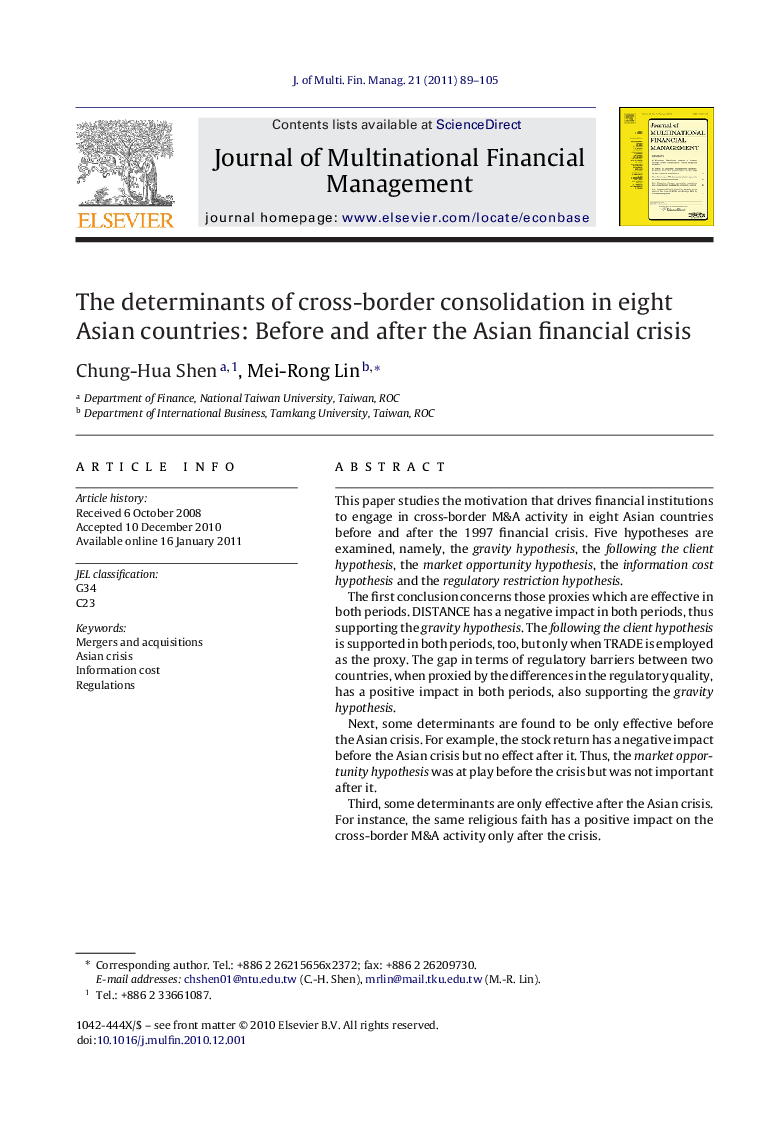| Article ID | Journal | Published Year | Pages | File Type |
|---|---|---|---|---|
| 967976 | Journal of Multinational Financial Management | 2011 | 17 Pages |
This paper studies the motivation that drives financial institutions to engage in cross-border M&A activity in eight Asian countries before and after the 1997 financial crisis. Five hypotheses are examined, namely, the gravity hypothesis, the following the client hypothesis, the market opportunity hypothesis, the information cost hypothesis and the regulatory restriction hypothesis.The first conclusion concerns those proxies which are effective in both periods. DISTANCE has a negative impact in both periods, thus supporting the gravity hypothesis. The following the client hypothesis is supported in both periods, too, but only when TRADE is employed as the proxy. The gap in terms of regulatory barriers between two countries, when proxied by the differences in the regulatory quality, has a positive impact in both periods, also supporting the gravity hypothesis.Next, some determinants are found to be only effective before the Asian crisis. For example, the stock return has a negative impact before the Asian crisis but no effect after it. Thus, the market opportunity hypothesis was at play before the crisis but was not important after it.Third, some determinants are only effective after the Asian crisis. For instance, the same religious faith has a positive impact on the cross-border M&A activity only after the crisis.Fourth, the three concepts are found to have more influence on the determinants after the Asian crisis. They are trade between the home country and host country, GDP growth in the host country and the same religion between the two countries.
